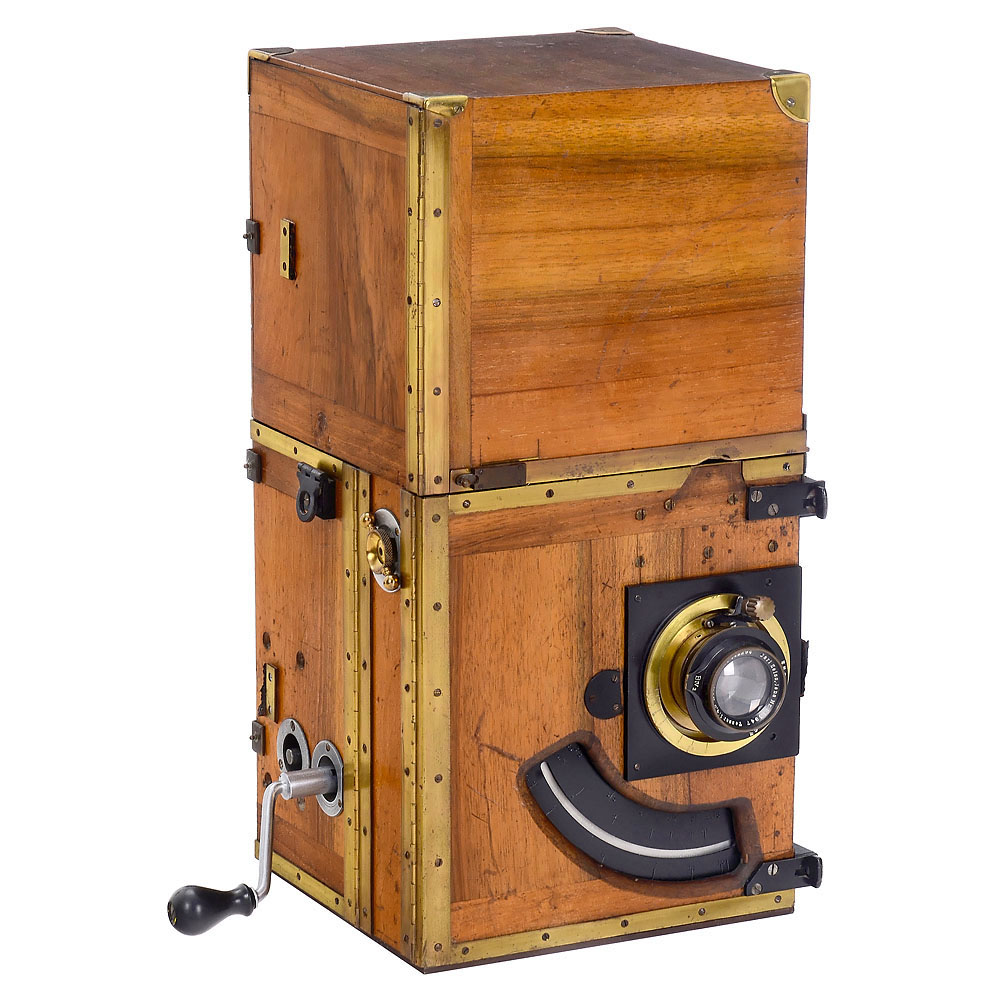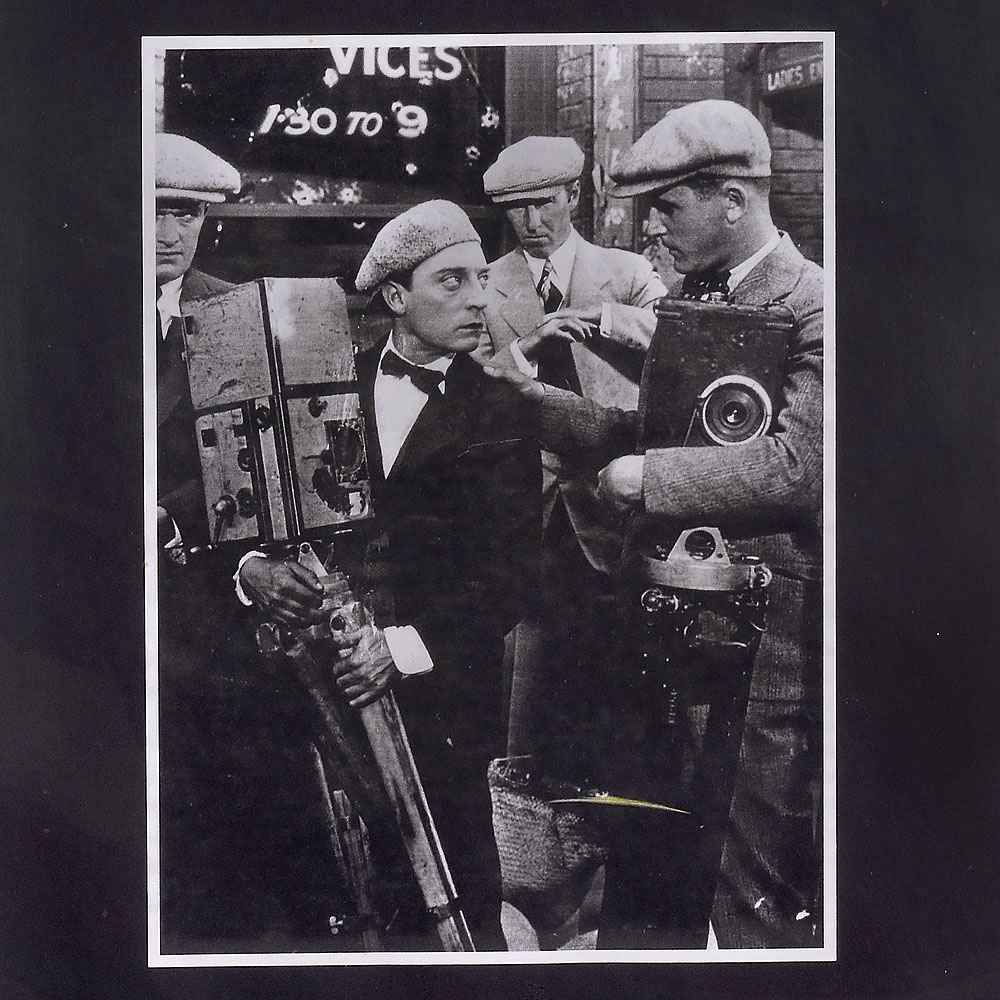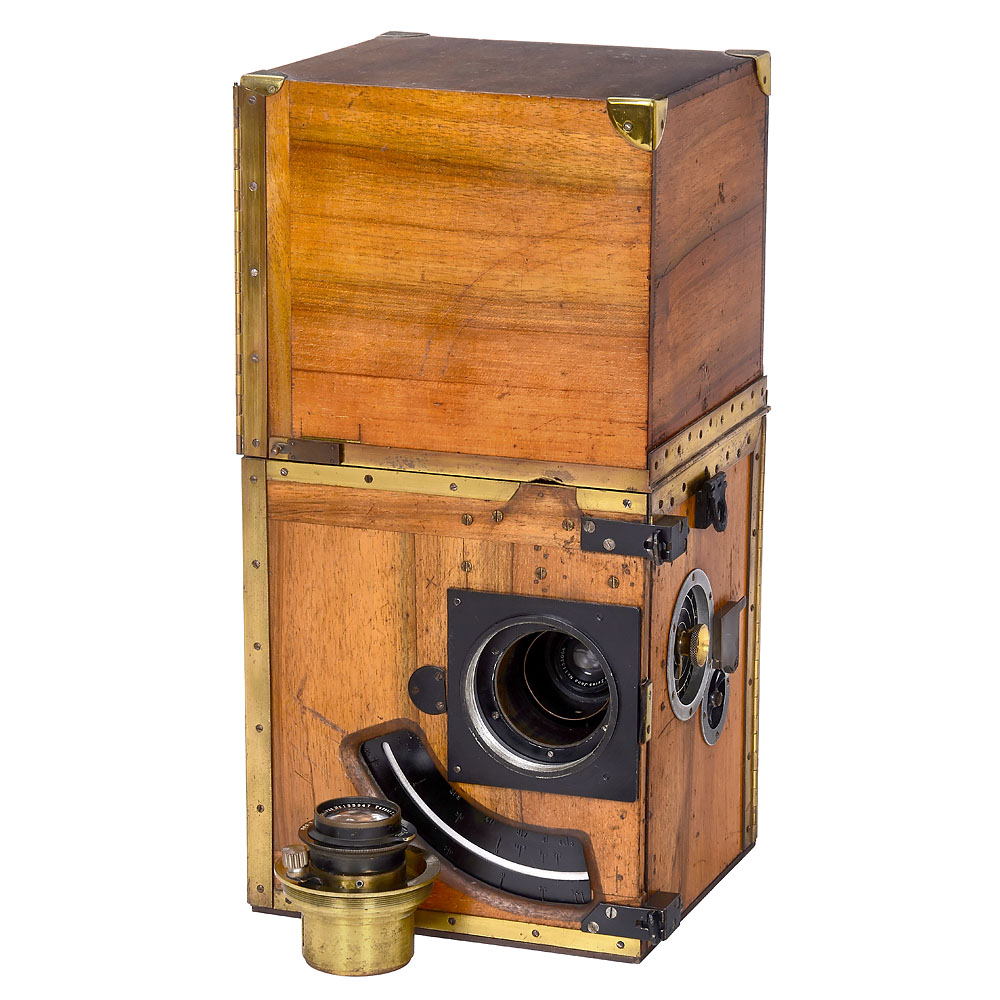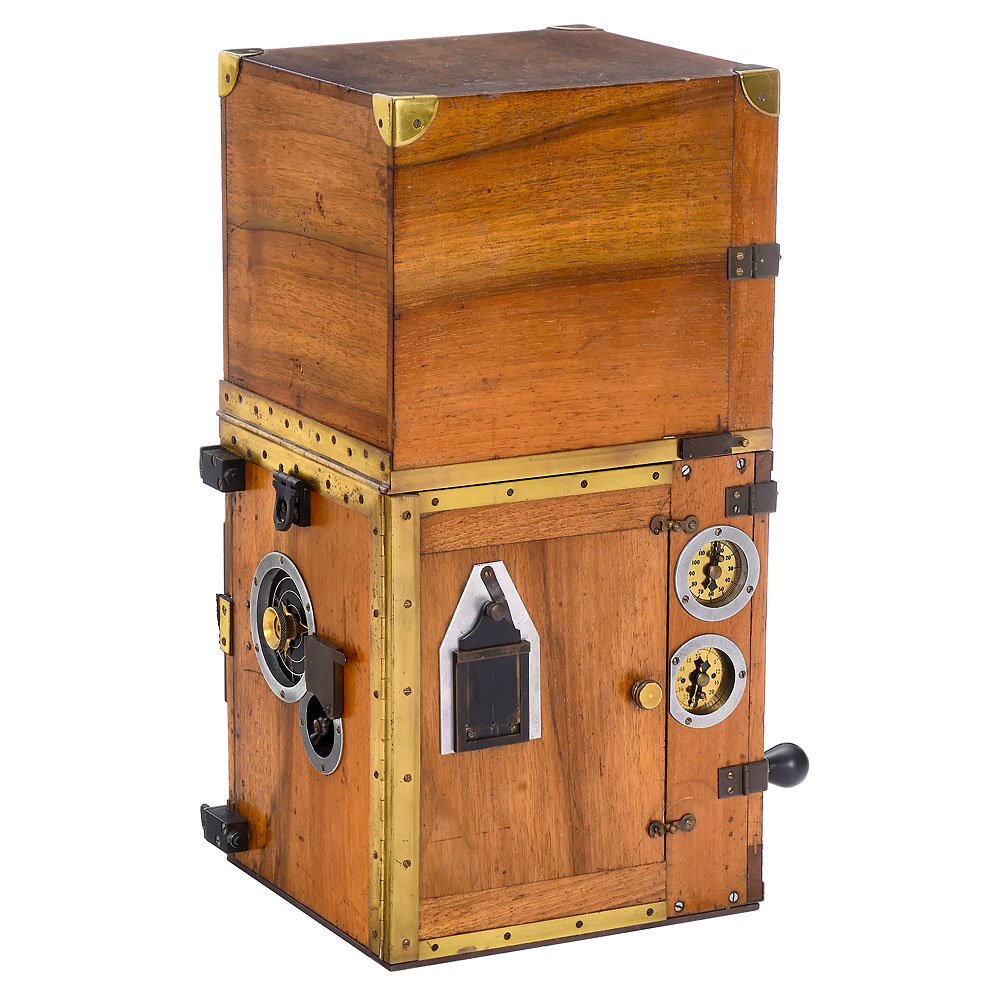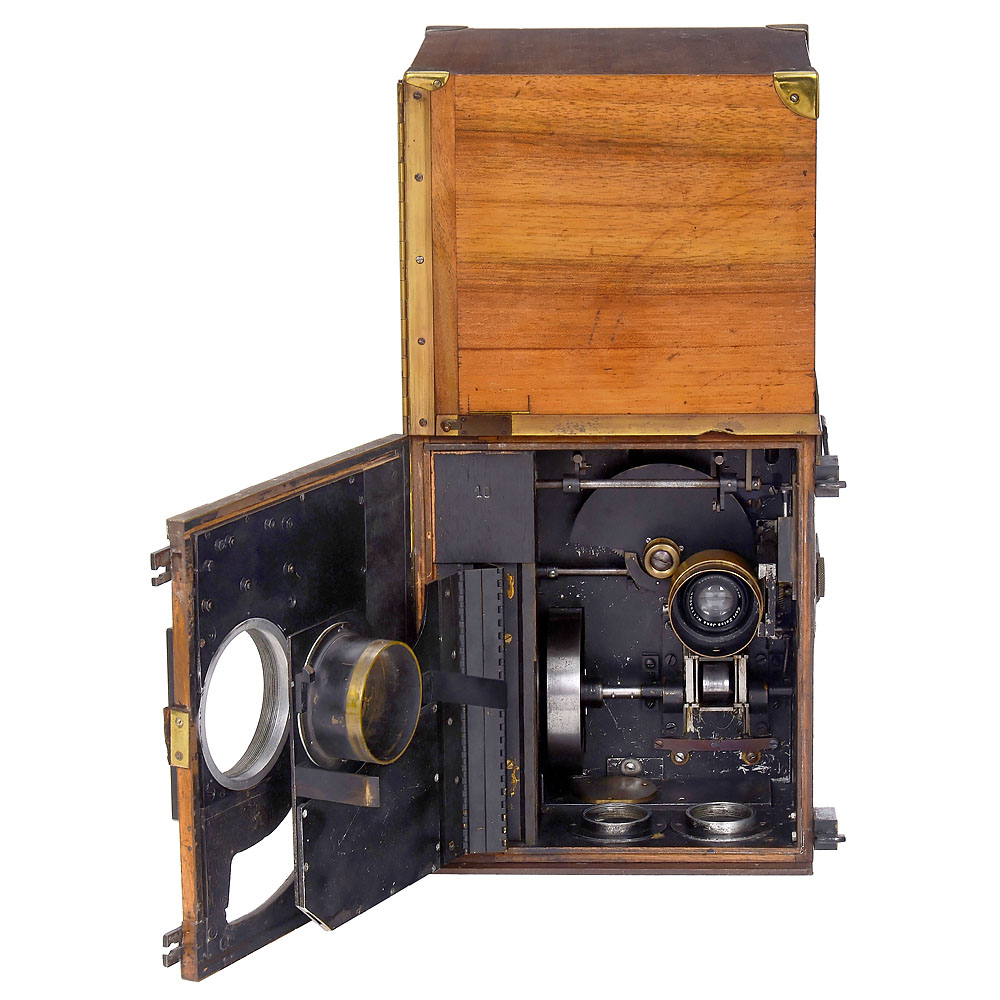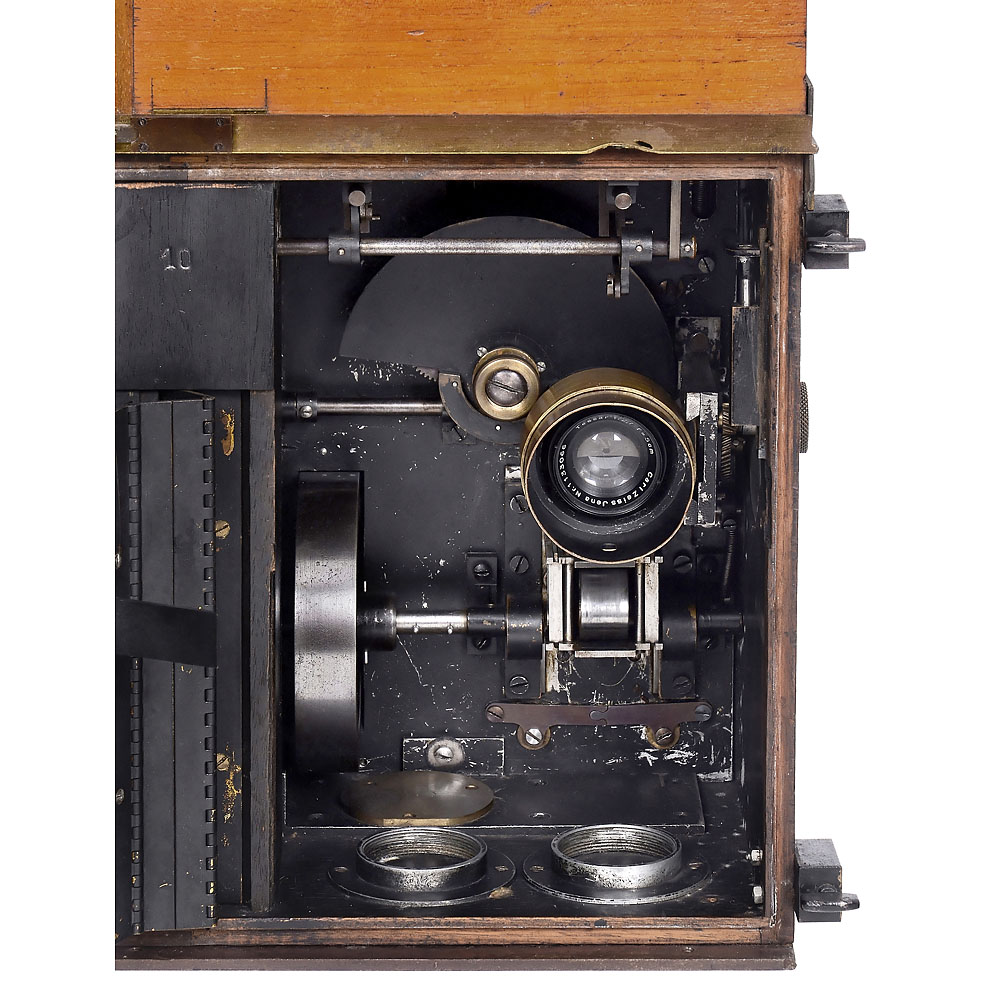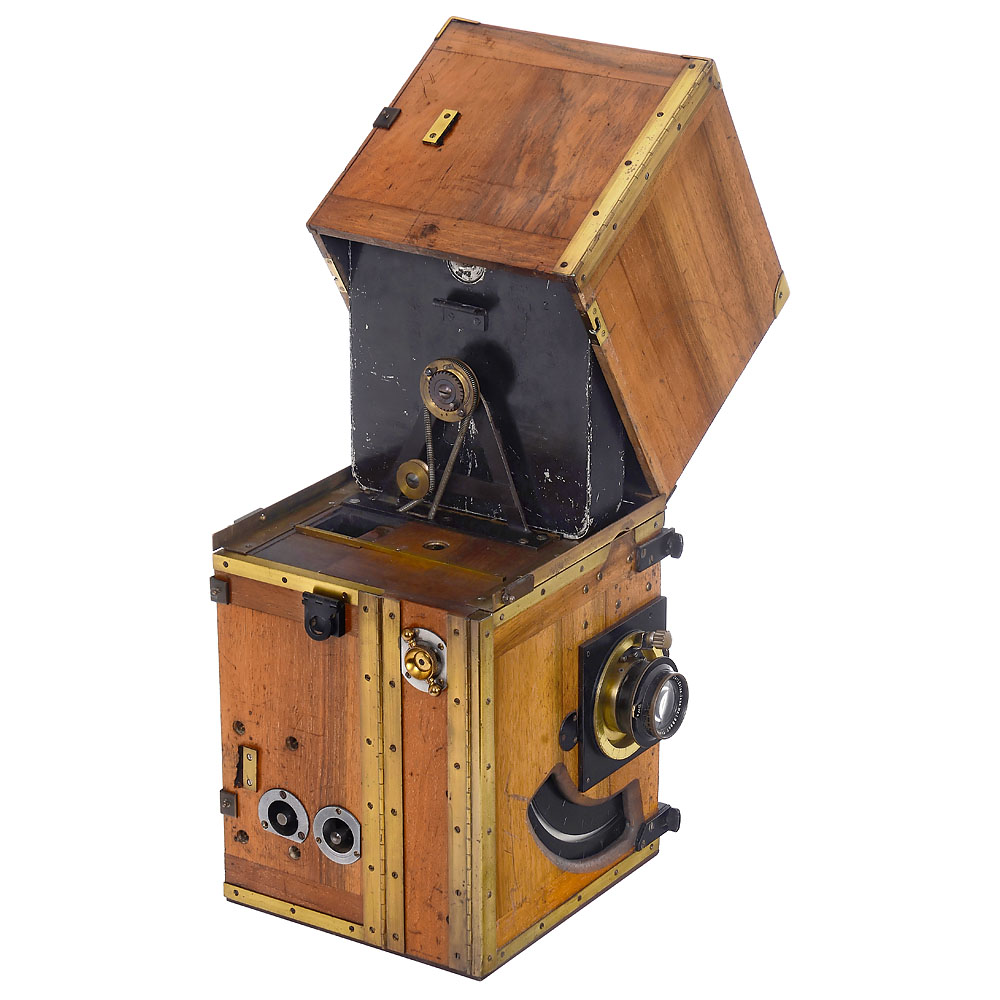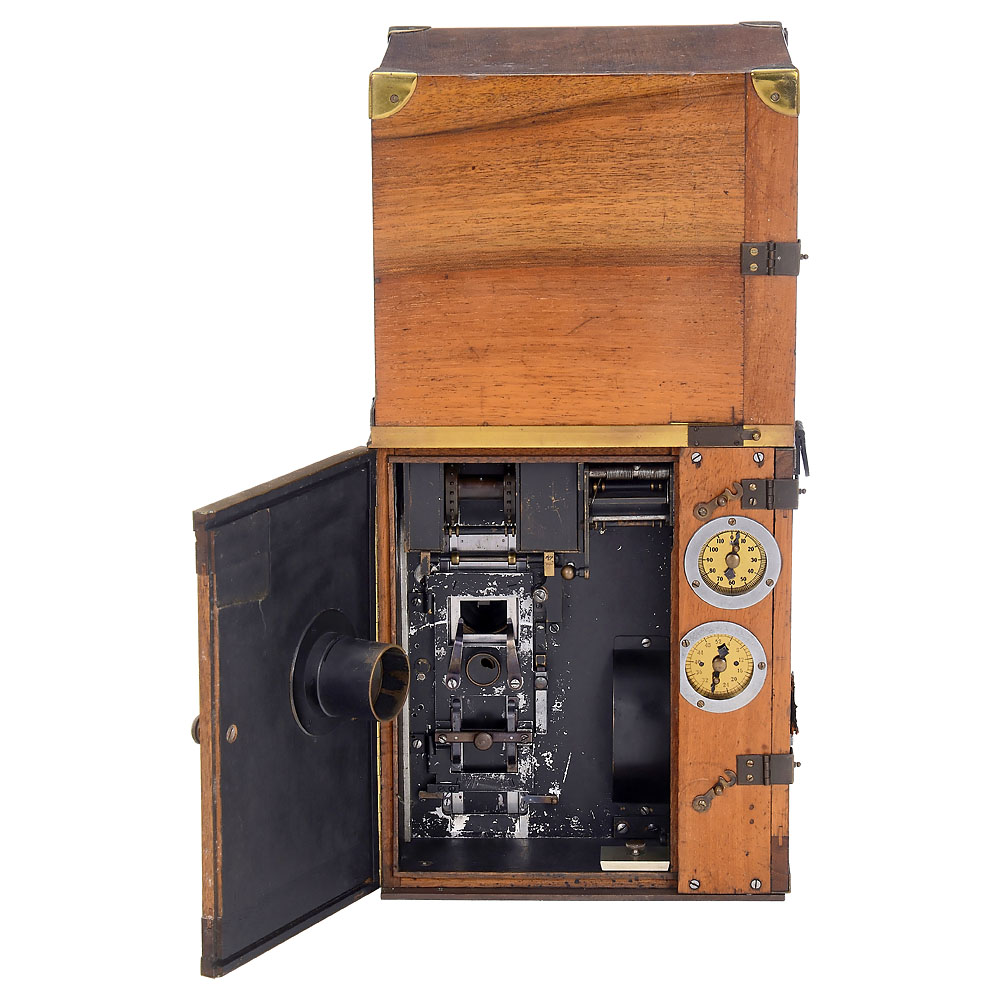260: Pathé “Prevost” Camera, c. 1908
Starting bid: € 3.800 | Estimate: € 4.500 – 6.000
Pathé Frères, Paris. A historic handcranked camera in a wooden case, from the early days of silent film in Europe. This camera includes: A Carl Zeiss Jena 2.7/50 mm standard lens, serial no. 1133066; a Carl Zeiss Jena 4.5/135 mm telephoto lens, serial no. 133947; a metal film canister for 100 meters of 35mm film; and a handcrank. Technical specifications: Using two different connections: 1 frame per crank rotation or 8 frames per crank rotation, the camera mechanism is operated by a handcrank. A film transport mechanism with a claw lever below the viewing window advances the film. A viewfinder lens on the back of the camera body is used for framing. It magnifies the image on the viewing screen (the film itself serves as the viewing screen). Two tachometers on the camera body display the number of frames exposed and the length of film used. Depending on whether the standard or telephoto lens is in use, the unused lens must be unscrewed (the iris diaphragm of the standard lens is likely stuck). – The “Prevost” camera was manufactured by Pathé in three different versions, each with slightly different technical features. According to the previous owner, this camera was used until 1935. A “Prevost” camera gained film fame as a prop in the 1928 Hollywood film “The Cameraman”. At the time of filming, the “Prevost” was already twenty years old. The cameraman (Buster Keaton) is ridiculed by his colleagues for using such an old “contraption” (see attached image).
Pathé “Prevost”-Kamera, um 1908
Pathé Frères, Paris. Historische Handkurbelkamera in Edelholzgehäuse aus der Frühzeit des Stummfilms in Europa. Zu dieser Kamera gehören: ein Normalobjektiv Carl Zeiss Jena 2,7/50 mm, Nr. 1133066, ein Tele-Objektiv Carl Zeiss Jena 4,5/135 mm, Nr. 133947, eine Metallkassette für 100 m Film im Format 35 mm und 1 Handkurbel. Technische Ausstattung: über zwei verschiedene Anschlüsse: 1 Bild pro Umdrehung oder 8 Bilder pro Umdrehung, wird mittels einer Handkurbel das Kameragetriebe bewegt. Als Schrittschaltwerk wird für jede Perforationsseite ein Greiferarm unterhalb des Bildfensters verwendet. Zur Ausschnittkontrolle wird die an der Rückseite des Gehäuses angebrachte Sucherlupe verwendet. Sie vergrößert das Mattscheibenbild des Films (Technik: Film als Mattscheibe). Im Gehäuse zwei Tachometer zur Anzeige der Bilderanzahl und der verbrauchten Filmmeter. Je nach gewünschter Verwendung in der Tele- oder Normal-Objektivfunktion muß die nicht benötigte Optik herausgeschraubt werden (Irisblende der Normal-Optik wahrscheinlich verharzt). – Die „Prevost”-Kamera wurde von Pathé in drei verschiedenen voneinander technisch abweichenden Varianten geliefert. Diese Kamera wurde laut Vorbesitzer bis 1935 verwendet. „Filmberühmt” wurde eine „Prevost”-Kamera durch ihre Verwendung als Requisit in dem 1928 gedrehten Hollywood-Spielfilm “Der Kameramann”. Die “Prevost” war damals schon zwanzig Jahre alt. Der Kameramann (Buster Keaton) wird von Kollegen verspottet, daß er mit einer solch alten „Mühle” konkurrieren will (siehe Bild anbei).

